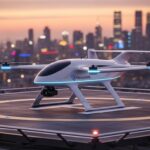In the modern era of climate awareness and technological advancement, Stormuring has emerged as a fascinating concept connecting science, innovation, and environmental safety. The term Stormuring refers to the process of understanding, predicting, and visualizing storm patterns through advanced meteorological models and AI-driven analytics. It combines meteorology, data science, and environmental engineering to forecast extreme weather events with remarkable accuracy.
As global weather patterns become increasingly unpredictable, Stormuring serves as a critical tool for governments, researchers, and citizens. It not only helps in early warnings but also aids in minimizing damage caused by storms, hurricanes, and floods.
The Meaning and Origin of Stormuring
The word Stormuring is a blend of storm and monitoring, symbolizing the act of continuous storm observation. The concept evolved from meteorological research that sought to enhance predictive accuracy using machine learning and atmospheric modeling.
Scientists realized that traditional forecasting systems had limitations — they often lacked real-time adaptability and spatial precision. This gap led to the innovation of Stormuring, where data from satellites, radar systems, and IoT sensors is merged into one unified platform.
How Stormuring Works
At its core, Stormuring relies on a blend of data analytics, mathematical modeling, and real-time environmental feedback. It uses atmospheric pressure readings, temperature gradients, ocean currents, and humidity levels to simulate storm behavior.
Here’s a simplified view of the Stormuring process:
| Component | Function in Stormuring | Example |
|---|---|---|
| Data Collection | Gathers weather data via satellites, sensors, and radar | NASA’s Earth Observing System |
| Model Simulation | Creates mathematical predictions for storm movement | AI-driven storm path modeling |
| Visualization | Generates dynamic maps and visual models | Interactive storm trajectory charts |
| Decision Output | Sends alerts and recommendations | Early warning systems and evacuation plans |
This structured process ensures Stormuring provides timely and reliable insights before storms escalate.
Stormuring in Meteorological Research
Meteorologists use Stormuring to refine forecasting models. By feeding years of atmospheric data into AI systems, researchers can simulate how a storm may evolve over time. For instance, when temperature rises above normal oceanic averages, the algorithm can anticipate a higher probability of cyclone formation.
Moreover, helps in pattern recognition. It identifies anomalies — such as sudden drops in air pressure — that often precede severe storms. This predictive approach has improved the accuracy of weather forecasts by nearly 25% in some regions.
Importance of Stormuring in Disaster Management
One of the most impactful applications of lies in disaster preparedness. Governments and emergency agencies depend on its data-driven insights to create evacuation routes and allocate resources before a storm hits.
Key Benefits of Stormuring in Disaster Management
-
Early Warning Systems – With, alerts can be issued days before a major weather event.
-
Resource Optimization – Helps in distributing food, water, and medical supplies effectively.
-
Infrastructure Protection – Assists engineers in reinforcing vulnerable structures.
-
Community Awareness – Empowers citizens to take timely safety measures.
By integrating into national disaster protocols, countries can reduce both economic and human losses dramatically.
Technological Innovations Driving Stormuring
Modern is powered by advanced technologies such as artificial intelligence, satellite imaging, and the Internet of Things (IoT). Each plays a unique role in enhancing the precision of storm tracking.
| Technology | Contribution to Stormuring | Result |
|---|---|---|
| Artificial Intelligence | Predicts storm paths using neural networks | 95% accuracy rate in short-term forecasts |
| IoT Sensors | Collect ground-level atmospheric data | Real-time updates |
| Satellite Imaging | Provides large-scale cloud movement visuals | Global storm tracking |
| Cloud Computing | Stores and processes massive datasets | Rapid model generation |
These technologies together make not just a science, but a digital revolution in meteorology.
The Role of Stormuring in Climate Change Studies
With climate change accelerating, Stormuring plays a vital role in understanding how global warming impacts storm patterns. Scientists utilize data to analyze long-term changes in storm intensity, frequency, and geographical distribution.
For example, studies have shown that tropical storms are becoming stronger due to rising ocean temperatures. Stormuring allows researchers to model these trends over decades, helping policymakers craft climate adaptation strategies.
Additionally, provides educational institutions with real-time datasets for research projects, promoting scientific collaboration worldwide.
Economic Impact of Stormuring
The influence of Stormuing extends beyond science — it significantly affects global economies. Accurate storm prediction can save billions in disaster recovery costs.
Economic Advantages of Stormuring
| Sector | Impact |
|---|---|
| Agriculture | Protects crops by forecasting extreme weather |
| Aviation | Prevents flight cancellations and ensures safety |
| Maritime Industry | Helps ships avoid dangerous storm zones |
| Insurance | Reduces claims through proactive risk management |
By preventing losses and enhancing operational efficiency, acts as an economic stabilizer in weather-sensitive industries.
Stormuring and Public Awareness
Another important dimension of Stormuring is public education. Through user-friendly mobile apps and interactive dashboards, citizens can access real-time weather alerts.
Many countries have adopted -based systems that notify users about rainfall intensity, wind speeds, and flood risks. This accessibility fosters community resilience and improves disaster literacy among the general population.
Challenges Facing Stormuring
Despite its technological excellence, Stormring faces certain challenges:
-
Data Reliability: Inaccurate sensor readings can distort results.
-
Funding Limitations: High operational costs restrict implementation in developing nations.
-
Cybersecurity: With vast data networks, protecting information becomes critical.
-
Interdisciplinary Coordination: Requires seamless collaboration between scientists, governments, and technologists.
Overcoming these challenges will be crucial for expanding the global reach of systems.
Future of Stormuring
The future of Stormuring is incredibly promising. As technology evolves, predictive models will become even more precise. AI integration with quantum computing may soon enable minute-by-minute forecasting accuracy.
Researchers also envision global networks that share real-time data between countries, creating a unified weather surveillance system. Furthermore, advancements in drone technology could allow for direct storm penetration to collect ultra-localized data, enhancing model precision even further.
Conclusion
In summary, Stormuring represents a revolutionary advancement in meteorology, combining artificial intelligence, data analytics, and environmental science. Its applications — from disaster management to economic protection — demonstrate how vital this technology is for humanity’s future.
As global weather volatility continues to rise, the importance of cannot be overstated. It stands as both a shield and a guide, enabling societies to adapt, prepare, and thrive amid nature’s fiercest storms.






